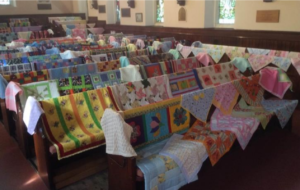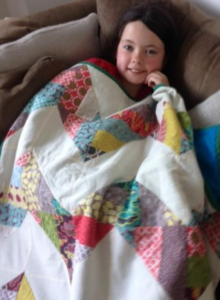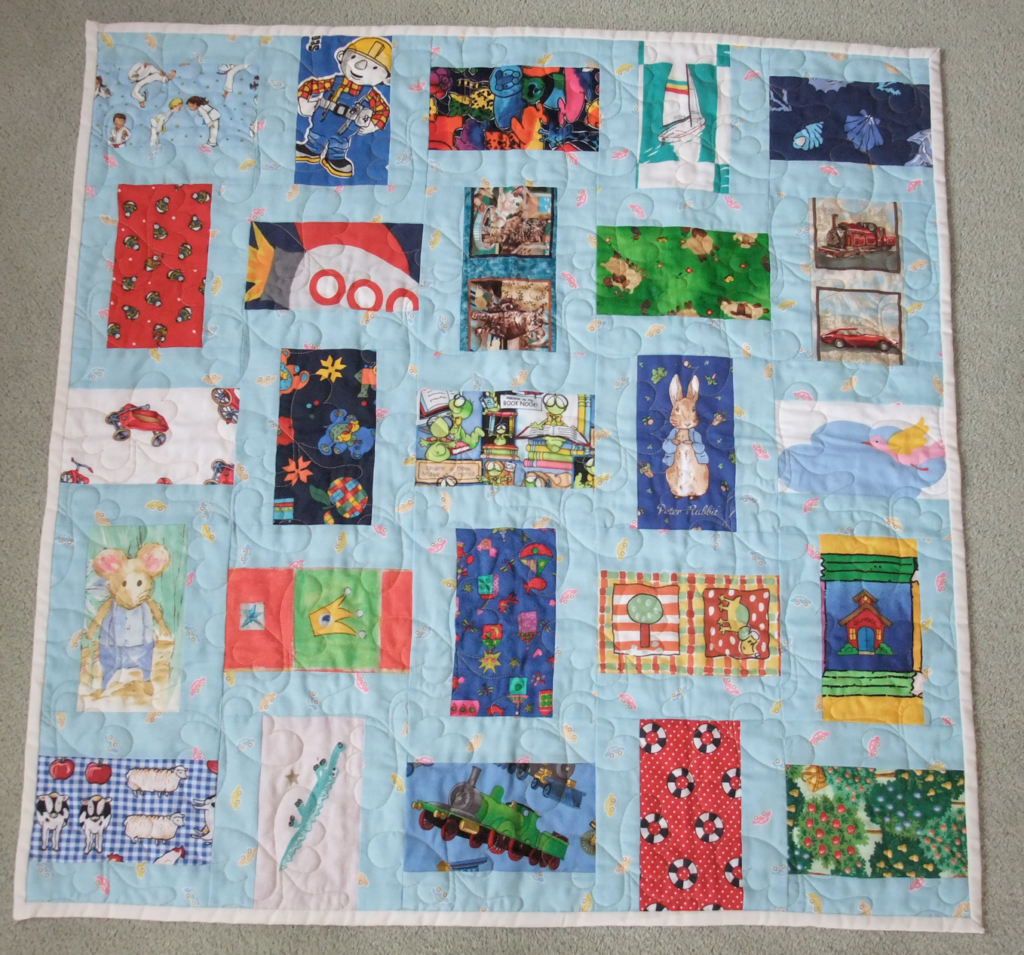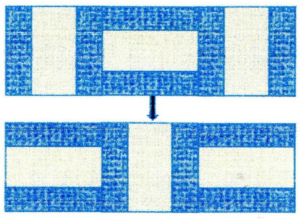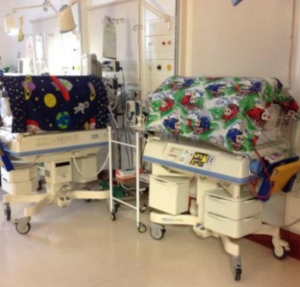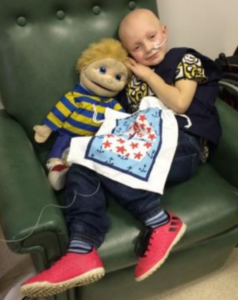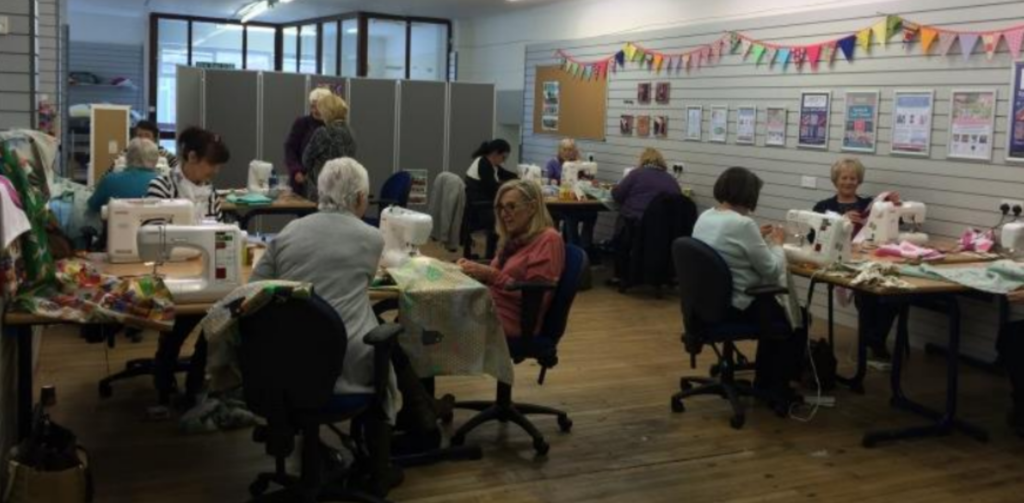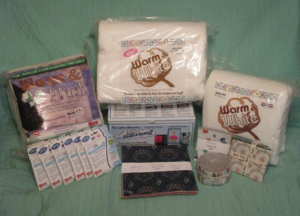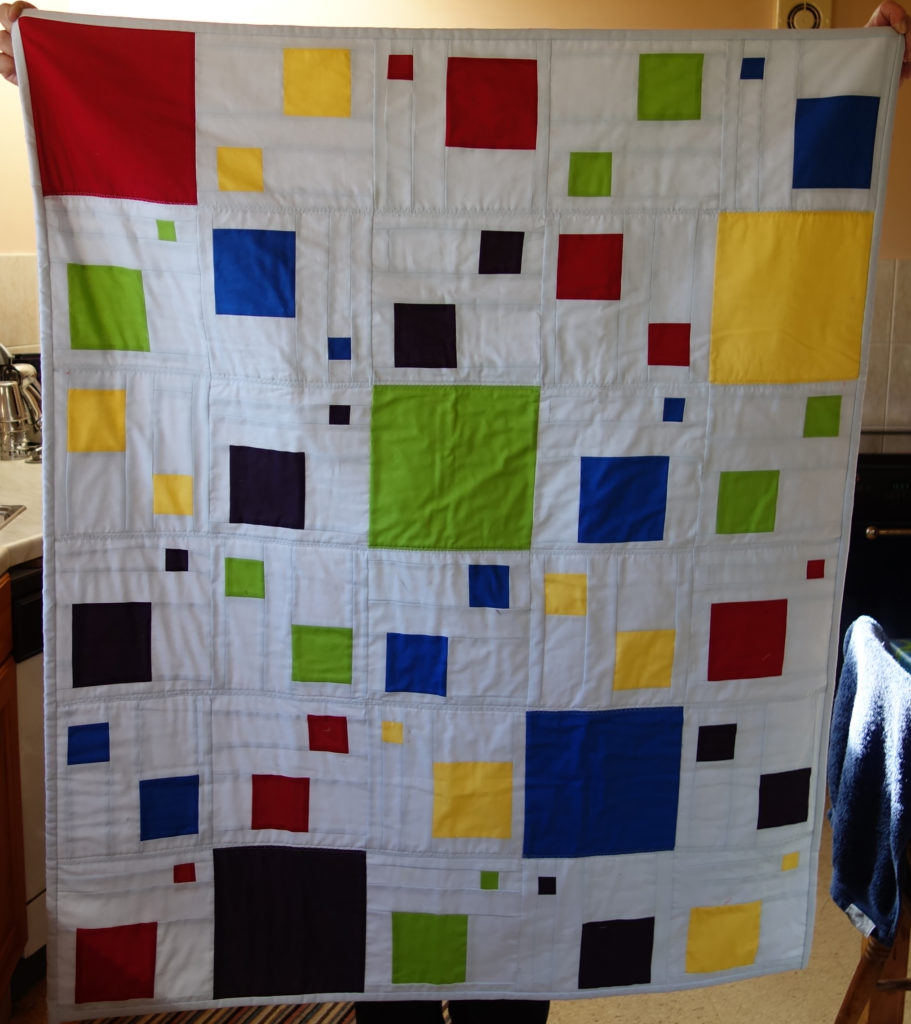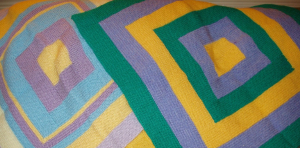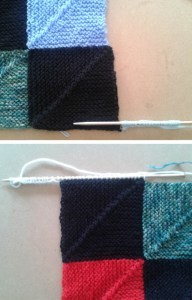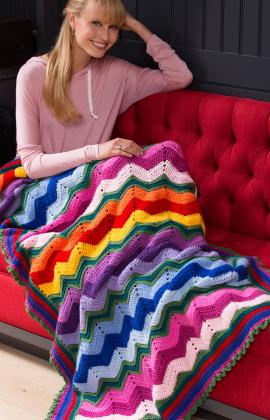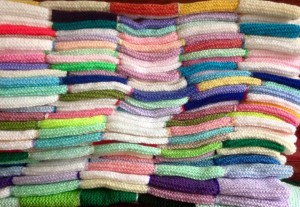Lyn | News from HQ
We’re busy planning for our stand at the Festival of Quilts (11th-14th August) at the NEC. The organisers are kind enough to let us have a free stand, but that does mean that they fit us in around their paying customers. Our stand number will be shared on Facebook and Twitter once it becomes available. We will be selling scrap fabric and raffle tickers to raise money for supplies. The Warm Company, who already provide free wadding to lots of Linus events around the country, have provided a number of packs of fleece and fabric as raffle prizes.
Linus coordinators have also taken stands at various other quilting and craft events around the country, several for the first time this year. I don’t know whether there are more shows, or whether we are just getting more involved. Either way, it has been a great way of meeting more people.
Maybe it is just the company I keep, but I feel that there is a real growth in the number of people willing to get involved in activities to help their communities, or perhaps it is that there are now increasing numbers of baby boomers like me reaching retirement and getting stuck in to organising things. There are lots of people with skills and time who are a great and often untapped resource who can make a real difference to the quality of life in their communities. There are some really active Linus ladies around the country who have managed to inspire their fellow needlewomen. This not only benefits the children who receive the quilts and blankets, and their families, but also provides a creative outlet, good company, and a sense of purpose to their makers. Let’s celebrate this sense of a community coming together and take that spirit out into the wider world.
Sylvia | Warrington
Crazy Quilters and Knitters for Linus celebrated their 10th anniversary at their April meeting with a coffee morning. There was a display of the quilts and blankets they had made since Christmas in the church. The event was well attended and we managed to raise lots of funds to continue our work. Regular visitors to our fundraising events have collected several tote bags for their £1 entrance fee from previous events and they proudly bring them, prepared to fill them with their neighbouring areas too.
Our star prizes for the raffle were a large Japanese style quilt and an Afghan blanket. Each group member had been involved in one or other of these projects. The cushion tombola proved to be popular with everyone. For the younger visitors we had balloon modelling, name the doll and lucky bags. We are very fortunate in getting lots of donations of fabric and wools and although these are not always suitable for Linus, our ladies keep very busy making lots of craft items for our stalls. At the end of the day, the children enjoyed getting involved by picking out the winning raffle tickets. Thank you to all our supporters.
Anita | Biggin Hill
“I just wanted to write to send you on my sincere thanks to yourself and your team at Project Linus for the support that you have recently given to the Biggin Hill Children and Family Centre. As you are aware , our purpose is to support families across the Borough during both difficult and desperate times for many different reasons. Many of the families that we support are impacted from many different situations and rely on professionals and kind-hearted people like you to support them through these difficult periods.
I am pleased to share with you that the blankets that you made and kindly donated have all been gratefully received by parents/carers and children locally that we felt would benefit the most. Thank you once again for all your hard work and support and I wish you every success for the future with the continuation of the amazing work that you do. We hope that you will come and see us again soon at the Children and Family Centre.”
Elspeth | Lanarkshire and Glasgow East
“Dear Elspeth, Just wanted to drop you a wee note to say thank you for the beautifully made quilt that my daughter received when she left Wishaw General yesterday. She loves it and is using it through her recuperation. Please pass on my thanks to the lady or gent that put so much of their time into making it, she will treasure it. Anne Henry”
Jacquie | West London and North Surrey
Last September I was invite to give a talk about Project Linus to Harlington WI. This went down very well, and there was a lot of interest as I passed around a variety of quilts for the ladies to handle. Not long after this I was contacted by the Chairman of the Middlesex Federation of Women’s Institutes. She had decided to offer a challenge to all of the WIs in Middlesex (50) to make quilts for Project Linus. I provided guidelines for the quilts, and two rolls of wadding were donated by The Warm Company for the challenge.
After their AGM in April (where the quilts were on display) I picked up 55 quilts and 34 knitted blankets which filled my car! The Middlesex WIs had really risen to the challenge and produced a variety of quilts in lots of different designs and sizes – perfect for Project Linus. I am hoping that some of the quilters will continue to make quilts for me as this has proved such a wonderful project.
Sally | Fife
Last week I attended a morning assembly at Masterton Primary School in Dunfermline where I gave a small talk about Linus and received 17 quilts made by P6 and P7. The children also said a few words about what they had been doing:
“Masterson Sewing Club runs every Thursday lunchtime by Mrs Campbell and Nana Barbara for P6 and P7 children who can sew. We try to do our best to use as many recycled materials with our sewing as we can from Masterton jumpers, duvet covers, Dads shirts and a lot more.”
This is the third year I have collected quilts from the school, they are so enthusiastic and keen it does you good to meet them.
Clare | Trossachs, Stirling and Surrounds
I had booked a holiday to Ecuador, and shortly before I left, the devastating earthquake occurred there. I asked my travel company if they had a local contact who could distribute quilts to children affected if I could take some with me. They are involved with supporting this charity and their representative was so very appreciative of the thought, and the quilts. They really were so touched to receive quilts from Project Linus UK. It meant a lot to them that the wider world cared about them.
Jacki | Gloucestershire and Bristol
Four year old Erin had five heart operations cancelled before finally having her surgery in May 2016 at the Children’s Hospital in Bristol. Erin’s Mum Tara has asked if Erin could have a quilt, and by the time she had the surgery, she had two – a hospital quilt and big girl quilt in pink and purple. She’s made a fantastic recovery and is a remarkable little girl.
Get in touch
Please send any articles or photographs for inclusion in the next newsletter to Ann.
